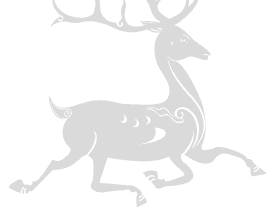jQuery核心之jQuery Object及其相关的常用方法
1、jQuery Object 和 原生的DOM对象之间有许多方法是不一样的,用jQuery的方法大部分情况下返回的是jQuery Object,但是jQuery也提供了一些方法可以很轻松的获取原生的DOM对象。
先来看:获取jQuery Object之一,
// Selecting only the first <h1> element on the page (in a jQuery object)var headings = $( "h1" );var firstHeading = headings.eq( 0 );
这里主要是因为headings里面包含有多个jQuery Object,所以用这个方法来获取特定的jQuery Object。
获取DOM 对象:
法1、
// Selecting only the first <h1> element on the page.var firstHeadingElem = $( "h1" ).get( 0 );
法2、
// Selecting only the first <h1> element on the page (alternate approach).var firstHeadingElem = $( "h1" )[ 0 ];
通过这两种方法获取的对象是原生DOM 对象,所以它有innerHTML,appendChild,等原生的js方法,但是没有jQuery特有的html(),after()等方法
还得注意:每一个通过选择器获取的jQuery Object是独一无二的,也就是它们之间的===关系总是返回false.
alert( $( "#logo" ) === $( "#logo" ) ); // alerts "false"
但是:用get()方法却可以获取同一个DOM 元素 ,此时它们之间的===关系返回true.
alert( $( "#logo" ).get(0) === $( "#logo" ).get(0) );
为了更好的区分jQuery Object和 native DOM Object 可以把$加在jQuery Object面前来标识它,这样使得代码更加容易阅读
// Comparing DOM elements (with more readable variable names).var $logo1 = $( "#logo" );var logo1 = $logo1.get( 0 );var $logo2 = $( "#logo" );var logo2 = $logo2.get( 0 );alert( logo1 === logo2 ); // alerts "true"
2、遍历
<div class="grandparent"><div class="parent"><div class="child"><span class="subchild"></span></div></div><div class="surrogateParent1"></div><div class="surrogateParent2"></div></div>
parent方法(获取父级元素):
// Selecting an element's direct parent:// returns [ div.child ]$( "span.subchild" ).parent();// Selecting all the parents of an element that match a given selector:// returns [ div.parent ]$( "span.subchild" ).parents( "div.parent" );// returns [ div.child, div.parent, div.grandparent ]$( "span.subchild" ).parents();// Selecting all the parents of an element up to, but *not including* the selector:// returns [ div.child, div.parent ]$( "span.subchild" ).parentsUntil( "div.grandparent" );// Selecting the closest parent, note that only one parent will be selected// and that the initial element itself is included in the search:// returns [ div.child ]$( "span.subchild" ).closest( "div" );// returns [ div.child ] as the selector is also included in the search:$( "div.child" ).closest( "div" );
children方法(获取子孙元素):
// Selecting an element's direct children:// returns [ div.parent, div.surrogateParent1, div.surrogateParent2 ]$( "div.grandparent" ).children( "div" );// Finding all elements within a selection that match the selector:// returns [ div.child, div.parent, div.surrogateParent1, div.surrogateParent2 ]$( "div.grandparent" ).find( "div" );
siblings方法(获取同级元素):
注意元素里面的顺序
// Selecting a next sibling of the selectors:// returns [ div.surrogateParent1 ]$( "div.parent" ).next();// Selecting a prev sibling of the selectors:// returns [] as No sibling exists before div.parent$( "div.parent" ).prev();// Selecting all the next siblings of the selector:// returns [ div.surrogateParent1, div.surrogateParent2 ]$( "div.parent" ).nextAll();// returns [ div.surrogateParent1 ]$( "div.parent" ).nextAll().first();// returns [ div.surrogateParent2 ]$( "div.parent" ).nextAll().last();// Selecting all the previous siblings of the selector:// returns [ div.surrogateParent1, div.parent ]$( "div.surrogateParent2" ).prevAll();// returns [ div.surrogateParent1 ]$( "div.surrogateParent2" ).prevAll().first();// returns [ div.parent ]$( "div.surrogateParent2" ).prevAll().last();
获取同级(除自己以外)的所有元素
// Selecting an element's siblings in both directions that matches the given selector:// returns [ div.surrogateParent1, div.surrogateParent2 ]$( "div.parent" ).siblings();// returns [ div.parent, div.surrogateParent2 ]$( "div.surrogateParent1" ).siblings();
3、CSS样式及其尺寸:
还有设置css的方法:
$("h1").css("color":"ffffff");
$("h1").css(
{
"background-color":"#6699cc";
}
)
等。
增加删除CSS样式类:
// Working with classes.var h1 = $( "h1" );h1.addClass( "big" );h1.removeClass( "big" );h1.toggleClass( "big" );if ( h1.hasClass( "big" ) ) {...}
addClass() 增加样式类
removeClass() 删除样式类
toggleClass("a") 如果样式类a存在,那么就删除样式类a,如果它不存在,那么就增加样式类a(起到一个样式切换的效果)
尺寸:
// Basic dimensions methods.// Sets the width of all <h1> elements.$( "h1" ).width( "50px" );// Gets the width of the first <h1> element.$( "h1" ).width();// Sets the height of all <h1> elements.$( "h1" ).height( "50px" );// Gets the height of the first <h1> element.$( "h1" ).height();// Returns an object containing position information for// the first <h1> relative to its "offset (positioned) parent".$( "h1" ).position();
4、数据方法(Data methods)
// Storing and retrieving data related to an element.$( "#myDiv" ).data( "keyName", { foo: "bar" } );$( "#myDiv" ).data( "keyName" ); // Returns { foo: "bar" }
// Storing a relationship between elements using .data()$( "#myList li" ).each(function() {var li = $( this );var div = li.find( "div.content" );li.data( "contentDiv", div );});// Later, we don't have to find the div again;// we can just read it from the list item's datavar firstLi = $( "#myList li:first" );firstLi.data( "contentDiv" ).html( "new content" );





 浙公网安备 33010602011771号
浙公网安备 33010602011771号